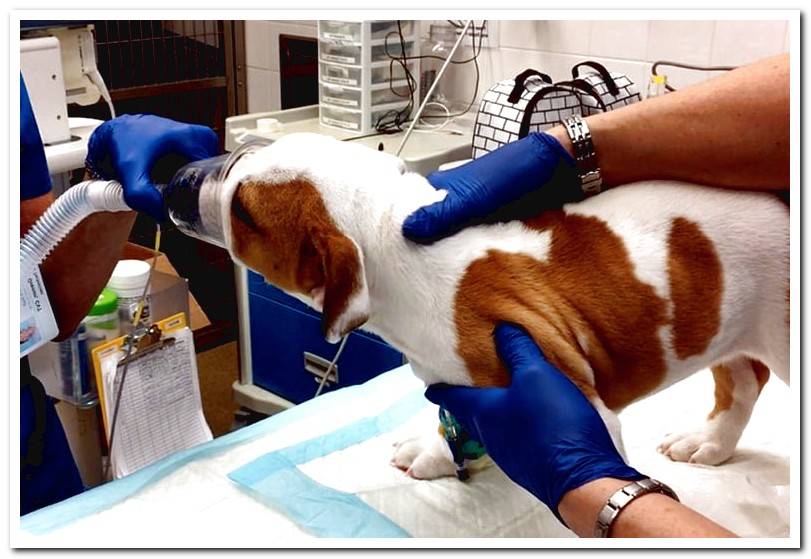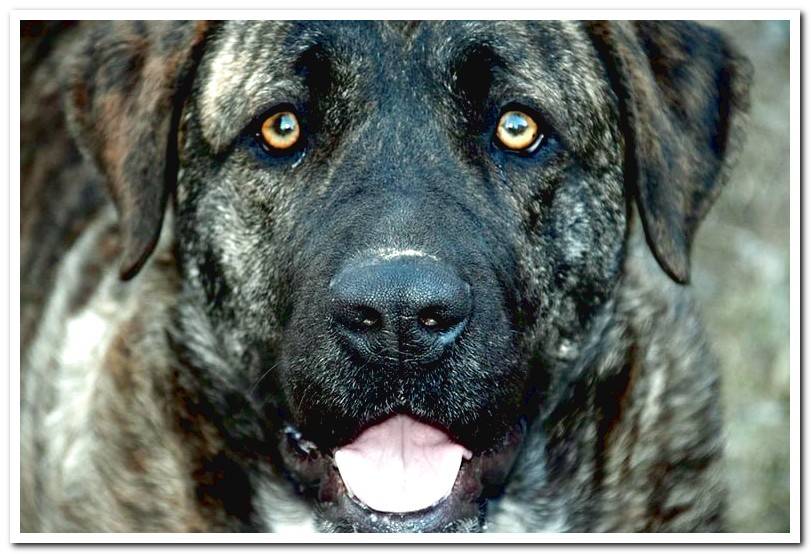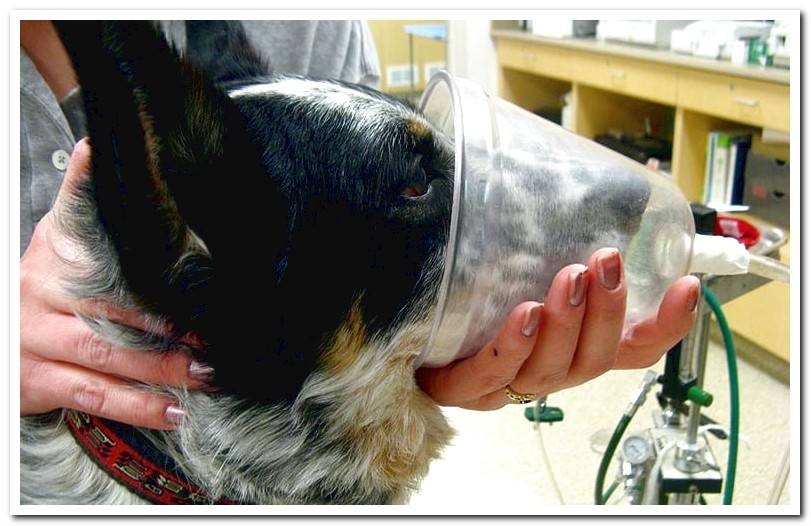
In a nutshell, we can explain lung edema as the accumulation of fluid in these organs. This situation, obviously, can considerably complicate our dog’s breathing, even to a fatal point.
Next we will learn to identify the symptoms that this edema produces, since an early diagnosis can help a lot to our dog to recover. We will also talk about the treatments that are applied in these cases.
Index of contents
- 1 What is a pulmonary edema?
- 2 Types of pulmonary edema in dogs
- 3 Symptoms of pulmonary edema in dogs
- 4 How is pulmonary edema diagnosed?
- 5 Treatment for pulmonary edema in dogs
- 5.1 Diuretic administration
What is a pulmonary edema?
Pulmonary edema is the name given to the accumulation of fluid that occurs in the lungs due to different causes. Thus, it is not a disease in itself but a symptom. Depending on the amount of fluid and the rest of the clinical picture, its severity will be greater or less and the respiratory difficulty it generates will depend on this.
Thus, pulmonary edema can produce anything from mild signs that hardly hinder the dog’s daily life to severe symptoms, with a respiratory compromise so important as to put his life at risk if he does not receive prompt clinical assistance. Furthermore, edema can be classified according to its presentation as acute or chronic.

Types of pulmonary edema in dogs
Since not all pulmonary edemas are the same, we will be able to differentiate them as follows:
- Cardiogenic pulmonary edema: This type of pulmonary edema is the result of the presence of heart disease that will cause malfunctions of the heart. Thus, the circulatory flow will be affected and this ends up leaking fluid into the lungs. This indicates that the damage is on the left side of the heart.
- Non-cardiogenic pulmonary edema: it is edema that is not related to heart disease. Its causes are varied and among them include suffocation, generalized infections, trauma, pneumonia or poisoning.
- Neurogenic pulmonary edema: It is the one that occurs in dogs less frequently. It appears after seizure disorders that affect the neurological system and result in increased blood flow to the lungs.

Symptoms of pulmonary edema in dogs
In general, in a dog with pulmonary edema we will be able to identify symptoms such as the following, which will manifest themselves with greater or lesser severity depending on the case:
- Dry cough or wet.
- Breathing difficulties.
- Foamy expectorations.
- Agitation.
- Typical body postures for air search.
- Runny nose.
- Cyanosis, that is, bluish discoloration of the mucosa caused by lack of air.
- Drowning in the most severe cases.

How is pulmonary edema diagnosed?
In addition to the appreciable symptoms that will help guide the diagnosis, the vet may use tests such as cardiopulmonary auscultation, chest radiography, ultrasound, and blood tests. All these procedures they will give us very valuable information about the state of the lungs and, in general, of the dog.
Based on these data, more tests could be requested, such as an electrocardiogram, urine analysis, or blood pressure measurement. Remember that the information we have will depend on the diagnosis and, consequently, the treatment. Hence the relevance of the evidence.
Treatment for pulmonary edema in dogs
In this section it is possible to distinguish acute or chronic edema presentations. In the first case we are facing a veterinary emergency. The lungs will not be able to function normally, respiratory difficulties will occur to the point that, if the dog is not stabilized, it could die.
On the other hand, chronic pulmonary edema usually accompanies pathologies such as those that affect the heart. In these cases, slight symptoms usually occur, such as sporadic cough, which allows a margin to guide and find the most appropriate treatment. These dogs can coexist with edema but they will need veterinary follow-up.
Therefore, severe edema is controlled on admission to administer oxygen and control fluids, usually with serum and intravenous diuretics. Home treatment, in milder cases, also usually includes diuretics. Of course, in both situations the vet has to find out what is the cause and treat it.
Diuretic administration
Diuretics are essential drugs in the treatment of pulmonary edema. Your role is to get decrease excess fluid which is impeding the normal functioning of the lungs. Many times we will have to administer them at home, so we should take into account the following aspects:
- We must scrupulously follow our veterinaryn’s recommendations regarding dosage and administration guidelines.
- It is normal that soon after taking the diuretic the dog feels like urinating. We will have to give him the opportunity to do so (greatly increase the number of walks)
- It is essential that in a dog with this medication let’s control their hydration. We will offer you plenty of water and / or a wet diet, how BARF diet.
